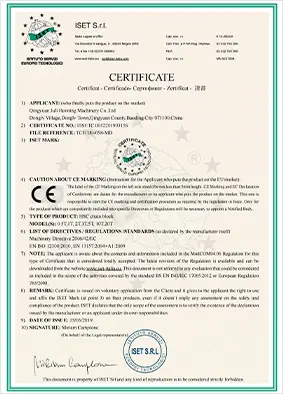


The Concept of Chain Block Lifting An Overview
Chain block lifting, often referred to simply as chain hoisting or chain block operation, is a fundamental technique in material handling and lifting applications. This method is widely employed in various industries, including construction, manufacturing, and warehousing, due to its efficiency and effectiveness in raising heavy loads. In this article, we will explore the principle of chain block lifting, its components, applications, and safety considerations.
At its core, a chain block is a mechanical device that utilizes a chain to lift, lower, and secure heavy objects. The basic principle involves a series of pulleys and a chain, which, when pulled, generate a lifting force. The innovation of the chain block lies in its ability to multiply force through mechanical advantage, making it possible to lift objects that would otherwise be too heavy to move manually.
Components of a Chain Block
The key components of a chain block include the following
1. Chain The lifting chain is made of durable materials and designed to handle significant tension. The chain's strength is crucial for ensuring safe lifting.
2. Pulleys The pulleys help in redirecting the chain's motion and distributing the weight of the load more evenly. Most chain blocks use a combination of fixed and movable pulleys to achieve the desired lifting capacity.
3. Load Hook The load hook is the component to which the load is attached. It is designed for easy attachment and release, providing users with a straightforward mechanism for securing items.
4. Hand Chain This is the chain that an operator pulls to lift or lower the load. The hand chain can be operated either manually or through a motorized system.
5. Frame The frame houses all the internal components and provides structural integrity. It is designed to withstand the forces exerted during lifting.
Applications of Chain Block Lifting
Chain block lifting is versatile, making it suitable for a range of applications
- Construction In construction sites, chain blocks are used to lift heavy building materials, such as steel beams, concrete blocks, and other equipment
.
- Manufacturing Factories often employ chain blocks to assemble products or move heavy machinery components from one location to another.
- Warehousing In storage facilities, these devices help in the efficient handling and relocation of goods, especially bulky items that require mechanical assistance.
- Marine and Automotive Industries Chain blocks play a significant role in lifting boats and vehicles for repairs, maintenance, or storage.
Safety Considerations
While chain block lifting is an effective means of moving heavy loads, safety should always be a priority. Here are some key safety considerations
1. Load Capacity Always adhere to the manufacturer’s specifications regarding the load capacity of the chain block. Overloading can lead to equipment failure and pose severe risks.
2. Regular Inspections Routine checks should be conducted to ensure that all components are functioning correctly. Look for signs of wear and tear, and replace damaged parts immediately.
3. Proper Training Individuals operating chain blocks should receive adequate training to understand the mechanics and safety procedures associated with their use.
4. Secure Loads Ensure that all loads are properly secured to prevent them from slipping or falling during the lifting process.
5. Environmental Considerations Be mindful of the working environment. Avoid operating chain blocks in hazardous conditions, such as high winds or confined spaces.
Conclusion
Chain block lifting is an indispensable tool in many industries due to its efficiency and practicality in handling heavy loads. By understanding its components, applications, and safety measures, users can maximize the benefits of this equipment while minimizing risks. As industries continue to evolve, chain block lifting will remain a cornerstone of effective material handling, proving its value in the modern workplace.



